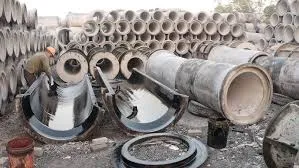ئۆكتەبىر . 14, 2024 21:35 Back to list
Innovative Techniques in Lost Wax Casting for High-Quality Metal Fabrication
Lost Wax Casting Factory A Behind-the-Scenes Look at an Ancient Technique
Lost wax casting, also known as investment casting, is a time-honored technique that has been utilized for thousands of years to create intricate metal objects. The process involves creating a wax model of the desired item, coating it with a ceramic material, and then melting the wax away, leaving behind a mold into which molten metal can be poured. This traditional method continues to thrive today, especially in specialized factories dedicated to lost wax casting. In this article, we delve into the intricacies of a lost wax casting factory, exploring its operations, benefits, and the innovative techniques that keep this ancient art form alive.
The Process of Lost Wax Casting
The journey of an object through a lost wax casting factory begins with the creation of a wax model. Skilled artisans meticulously sculpt the model, ensuring every detail is captured accurately. Depending on the complexity and size of the piece, the wax can be either poured into molds or sculpted by hand. Once the wax model is complete, it is coated with a special ceramic shell made from a mixture of fine sand and a binding agent.
After the ceramic shell hardens, the wax is melted out, hence the name lost wax. This is typically done using heat, with the shell being placed in a kiln, allowing the wax to drain away while leaving a hollow mold. The next step is to pour molten metal—often bronze, brass, or silver—into the mold. Once the metal has cooled and solidified, the ceramic shell is broken away, revealing the finely crafted metal object.
Advantages of Lost Wax Casting
One of the primary advantages of lost wax casting is the ability to produce highly detailed and complex shapes that would be difficult, if not impossible, to create using other methods. The flexibility in design makes it an excellent choice for both artistic and industrial applications, from jewelry and sculptures to components used in aerospace and automotive industries.
Additionally, lost wax casting allows for a high degree of accuracy and repeatability. Once a mold is developed, multiple copies can be made with minimal variations, making it ideal for mass production of specific items. The factory settings often employ advanced technologies to ensure high precision, including computerized modeling and automated temperature controls.
Equipment and Technology in Lost Wax Casting Factories
lost wax casting factory

Modern lost wax casting factories incorporate a vast array of equipment and technologies to enhance efficiency and precision. 3D printing has become a revolutionary tool in the creation of wax models. Artisans can now design intricate patterns on computer software, which are then printed in wax using 3D printers. This not only speeds up the model-making process but also opens up new design possibilities, pushing the boundaries of traditional craftsmanship.
In addition to 3D printing, many factories utilize advanced furnaces and temperature control systems to manage the melting and pouring processes. These technologies ensure that the metal is heated to the exact temperature required for casting, minimizing defects and ensuring quality.
Sustainability Practices in Lost Wax Casting
With the growing concern over environmental impacts, many lost wax casting factories have begun integrating sustainable practices into their operations. This can include sourcing recycled metals for casting, minimizing waste during the waxing and pouring processes, and utilizing eco-friendly materials for shell coatings.
Furthermore, advancements in technology are leading to more energy-efficient methods of production. Factories are increasingly adopting practices that reduce their carbon footprint while maintaining the quality and integrity of their products.
Conclusion
The lost wax casting factory represents a fascinating blend of artistry and engineering. While the basic principles of the technique have remained unchanged for centuries, modern innovations have breathed new life into this ancient craft. By combining traditional skills with cutting-edge technology, these factories are able to produce exquisite metal objects that are not only functional but also works of art.
As we continue to appreciate the beauty and craftsmanship that lost wax casting offers, it becomes evident that this technique is far from obsolete. Instead, it stands as a testament to the enduring power of human creativity and the continuous evolution of manufacturing practices. Whether for jewelry, industrial components, or artistic sculptures, the lost wax casting process remains a crucial part of our cultural and industrial heritage, bridging past and future in the realm of metalwork.
-
Durable Centrifugally Cast Iron Water Main Pipe
NewsAug.11,2025
-
Centrifugally Cast Iron Water Main Pipes for Reliability
NewsAug.10,2025
-
High-Quality Centrifugally Cast Iron Water Main Pipes
NewsAug.09,2025
-
Durable Cast Iron Water Main Pipe & Drainage Solutions
NewsAug.08,2025
-
Buy Cast Iron Pipe: Premium Ductile Iron & Drain Solutions
NewsAug.07,2025
-
Durable Cast Iron Water Main Pipe | Buy Ductile Pipe
NewsAug.06,2025


